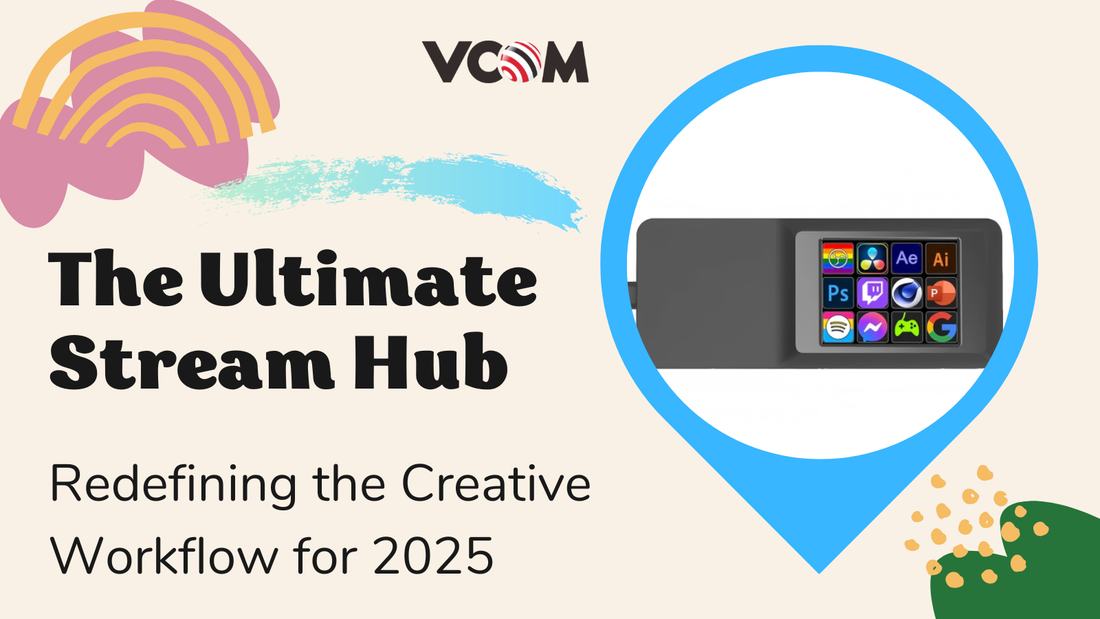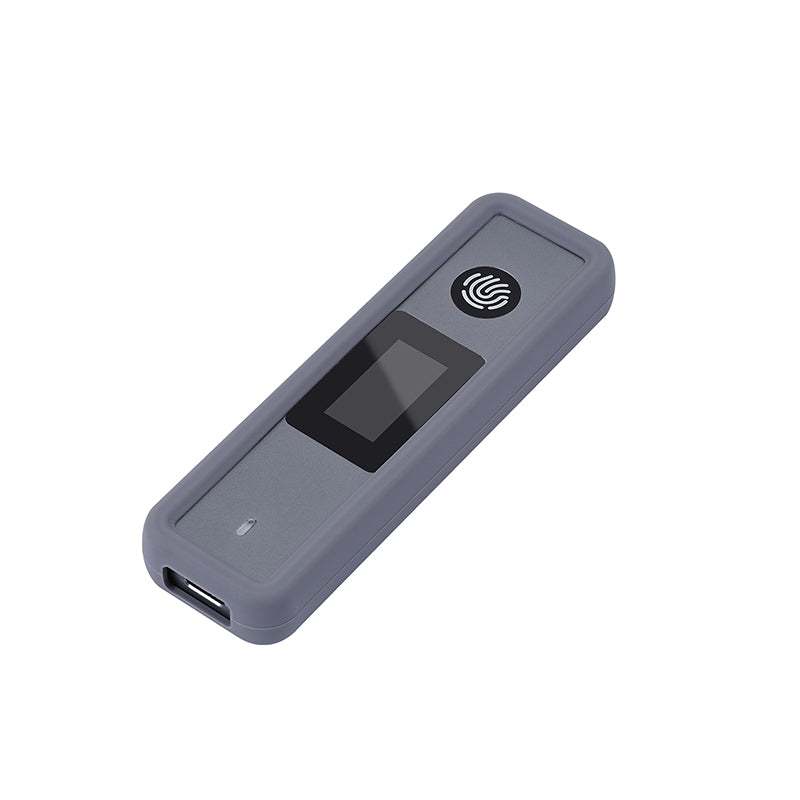
Share
The Ultimate Stream Hub: Why All-in-One Touch Docks Are Redefining Creative Workflows in 2025
Introduction: A New Era of Creative Workstations
In 2025, digital creators and professionals share a common goal: simplify their workspace without sacrificing performance. Whether you’re a live streamer, video editor, or remote worker, you’ve probably dealt with a tangle of cables, limited USB ports, and multiple devices scattered across your desk. The demand for smarter, cleaner, and more integrated setups has never been higher.
Enter the All-in-One Touch Dock — a new class of productivity hub that combines connectivity, power, and tactile control into one device. Among these innovations, the Stream Hub with Trigger Action Screen stands out as a prime example of what next-generation creative hardware looks like.
This isn’t just another USB-C dock. It’s a bridge between creativity and control — merging the power of a full docking station with the interactivity of a customizable touch screen. In this article, we’ll explore how this new wave of touch-controlled hubs is transforming digital workflows for creators and professionals alike.

I. The Rise of All-in-One Touch Docks
Over the past few years, the way creators work has changed dramatically. Streamers now manage multiple cameras and audio sources while interacting with live audiences. Designers switch between drawing tablets, external monitors, and file storage. Video editors often run multiple high-bandwidth devices simultaneously.
Traditional hubs and docks helped connect these tools, but they never solved the workflow friction. Users still relied on separate control panels, like a Stream Deck for shortcuts and a dock for connectivity. The result? A cluttered, disjointed workspace.
That’s why the rise of All-in-One Touch Docks feels inevitable. These devices consolidate essential functions — data transfer, power delivery, and interactive control — into a single, compact system. By integrating tactile control directly on the dock, users no longer need separate hardware to trigger actions, automate macros, or launch creative apps.
Imagine replacing three devices — your Stream Deck, USB-C hub, and power adapter — with a single, elegantly designed dock. This combination of simplicity, control, and efficiency defines the next stage of workstation evolution.
If you’re specifically interested in how creators and streamers are using these docks to manage OBS scenes and automate tasks, check out our companion guide: From Streaming to Editing: How a Touch-Screen Dock Simplifies Your Entire Content Workflow.
II. Hardware Integration That Matters
At first glance, the Stream Hub looks like a modern USB-C dock. But under the hood, its hardware design solves many of the pain points creators face daily.
1. Type-C PD 100W Power Delivery
The Stream Hub supports up to 100W of fast charging, which is sufficient to power even high-performance laptops like MacBook Pros or Dell XPS models. Fifteen watts are reserved for system operation, ensuring the hub runs efficiently while providing 85W of stable output to your host device. No more worrying about your laptop draining mid-stream or during rendering.
2. HDMI 4K Video Output
With support for up to 3840×2160 resolution, this dock can connect to ultra-HD monitors for crisp visuals. For creative professionals, color accuracy and screen real estate are essential — and a 4K HDMI port at 60Hz means you can edit, design, or stream with absolute clarity.
3. USB 3.0 High-Speed Ports
The three USB 3.0 ports deliver up to 5.0 Gbps transfer speeds, ideal for connecting SSDs, cameras, or external microphones. High bandwidth ensures smooth video capture and stable data transmission even when multiple devices are active.
4. SD/TF Card Compatibility
Dual SD and TF card slots make importing media from cameras or drones effortless. While both slots cannot function simultaneously, their inclusion offers unmatched flexibility for photographers and videographers who rely on fast data transfer.
5. RJ45 Ethernet Connectivity
A 10/100 M adaptive Ethernet port ensures stable, low-latency connections for streaming or online meetings — a must for anyone working with real-time content.
All these elements come together to form a powerful, reliable, and compact workstation hub. Traditional docks often suffer from unstable power delivery, limited ports, or lack of interactivity. The Stream Hub eliminates these weaknesses by merging robust hardware with intuitive control.
For a deeper dive into the technical specifications and why power distribution design matters, you can explore our engineering-focused article: Inside the Tech: Understanding the Power and Performance of a True All-in-One Expansion Dock.
III. The Custom Touch Screen Revolution
What truly sets the Stream Hub apart is its custom 3×4 touch screen interface — a small but powerful control surface that brings creative control to your fingertips.
1. Fully Programmable Touch Buttons
Each of the twelve touch zones can be programmed to execute macro commands, such as launching software, adjusting volume, switching OBS scenes, or running system scripts. Imagine tapping one icon to open Adobe Premiere, load your project, and start recording — all within seconds.
2. DIY Macro Command Icons
Users can design their own icons to reflect the function of each button. This not only improves workflow clarity but also personalizes the entire setup. The tactile feedback of the screen adds a sense of immediacy that physical keyboards or mice can’t replicate.
3. Three Distinct Modes
The Stream Hub’s screen features three operation modes:
Button Mode: For executing commands and shortcuts.
GIF Display Mode: Allows animated icons for visual cues or branding.
Screen Saver Mode: Displays clock or images when idle.
This flexibility transforms the dock from a utility tool into a personalized command center.
In essence, the Stream Hub acts as a modern replacement for traditional macro decks — compact, visually engaging, and seamlessly integrated with your devices.
If you’re into customization and productivity hacks, our article Power Users Rejoice: Custom Macro Docks Are the Productivity Secret Weapon You Need explores advanced use cases like AutoHotkey scripts, Notion automation, and creative shortcut workflows.
IV. Use Cases Across Different Fields
One of the biggest advantages of a touch-controlled dock is how it adapts to different types of users. Let’s look at how this device transforms daily tasks across various professions.
1. Streamers and Content Creators
For streamers, the ability to control multiple actions simultaneously is crucial. With the Stream Hub, you can:
Switch OBS scenes instantly.
Adjust lighting and audio on the fly.
Display animated GIF buttons that reflect live status (e.g., “ON AIR”).
Use wired Ethernet for zero-lag broadcasting.
This dock replaces both the Stream Deck and a typical hub setup, freeing desk space while offering more reliable connectivity.
For a detailed tutorial on setting up your streaming or editing workflow, read From Streaming to Editing: How a Touch-Screen Dock Simplifies Your Entire Content Workflow.

2. Designers and Video Editors
Creative professionals often juggle large file transfers, external drives, and design peripherals. The Stream Hub’s combination of USB 3.0 ports, SD/TF readers, and 4K HDMI makes it ideal for editing suites. The touch interface can be customized for:
Photoshop tool shortcuts
One-tap export commands
Timeline navigation controls
It streamlines complex tasks into visual, intuitive interactions — helping creators stay focused on the art, not the tools.
3. Programmers and Power Users
Developers love automation, and the Stream Hub embraces it. You can program macros to:
Run terminal scripts
Trigger Git commits
Launch development environments
Toggle between test servers
For deeper insights into how tech enthusiasts and automation lovers use these docks to enhance efficiency, check out Power Users Rejoice: Custom Macro Docks Are the Productivity Secret Weapon You Need.
4. Business Professionals and Remote Workers
Not all users are creators — many are professionals managing virtual meetings or hybrid work setups. With a touch dock, you can assign shortcuts for:
Instantly joining Zoom or Teams calls
Sharing your screen
Muting/unmuting microphones
Switching between camera feeds

Combined with RJ45 Ethernet for stable connectivity, this setup ensures every meeting runs smoothly — no frantic searching for buttons or cables.
If your focus is building a cleaner, more efficient workstation, our business-oriented feature The Future of Work Desks: Why Professionals Are Turning to Touch-Controlled USB-C Docks covers practical setup ideas and ergonomic design tips.
V. Future Outlook: Where Touch-Controlled Docks Are Heading
As work and creation continue to merge in digital environments, the demand for integrated intelligence in hardware will only grow. The next generation of touch docks will likely include AI-driven automation — learning from user behavior to predict and execute commands proactively.
We’re already seeing signs of convergence between hardware and software ecosystems. Future docks may sync user layouts across devices via the cloud, allowing creators to carry their personalized command panels anywhere. Imagine plugging your dock into any laptop and instantly restoring your entire creative environment — from macros to lighting profiles.
Moreover, sustainability and energy efficiency will become defining factors. All-in-One Touch Docks like the Stream Hub reduce the need for multiple separate devices, cutting down on electronic waste and power consumption. This isn’t just about better workflow — it’s about smarter, greener technology.
Conclusion: Control, Efficiency, and the Future of Creative Workflows
The Stream Hub with Trigger Action Screen represents a pivotal moment in the evolution of modern workspaces. It combines three core principles — integration, interactivity, and intelligence — into a single piece of hardware.
Integration: consolidating power, ports, and peripherals.
Interactivity: empowering users through tactile, customizable touch control.
Intelligence: adapting to how you create, edit, or collaborate.
Whether you’re a streamer managing live content, a designer perfecting visuals, or a remote professional running global meetings, this all-in-one dock is designed to simplify your day and supercharge your workflow.
To explore more specialized guides in this blog cluster:
From Streaming to Editing — optimize your content creation flow.
The Future of Work Desks — build the ultimate productivity station.
Power Users Rejoice — unlock automation with custom macros.
Inside the Tech — understand the hardware that powers it all.
As the creative and professional worlds continue to converge, All-in-One Touch Docks like the Stream Hub are no longer luxury add-ons — they’re the new foundation for digital productivity in 2025 and beyond.

